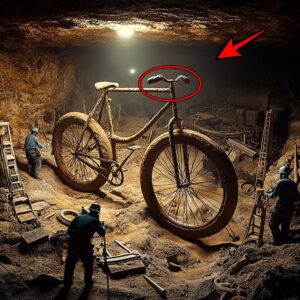The ancient Egyptians believed that to enter the afterlife, the deceased’s body must be preserved through a process known as mummification. This sacred ritual, perfected over millennia, not only demonstrates the Egyptians’ advanced knowledge of anatomy and chemistry but also reflects their profound spiritual beliefs and cultural practices. This article explores the meticulous mummification techniques of ancient Egypt and examines their lasting impact on modern science and culture.

Why Preserve the Body?
The ancient Egyptians cherished life and believed fervently in an afterlife, a belief that motivated their elaborate preparations for death. Contrary to seeming morbid, these preparations were rooted in a profound belief that life continued beyond death, necessitating the preservation of their physical bodies. The mummification process aimed to maintain the body as lifelike as possible, essential for the continuation of life in the afterlife.

It was believed that the mummified body housed the soul or spirit; destruction of the body could result in the spirit’s loss and its inability to enter the afterlife. Tomb preparation was a critical aspect of this belief, initiated well before death, and included storing items needed in the afterlife like furniture, clothing, food, and valuables.

Techniques of Mummification
The ancient Egyptian mummification process, as detailed in a 2011 study, was a sophisticated ritual that took 70 days to complete. This period was marked by a blend of meticulous physical preservation techniques and spiritual practices conducted by priests who doubled as embalmers. The steps and variations in the mummification process reflect not only the technological expertise of the ancient Egyptians but also the class distinctions that permeated their society.

Removal of Internal Organs: Initially, the brain was carefully extracted through the nostrils using a special hook, reflecting their belief that it was not essential for the afterlife. Meanwhile, other internal organs susceptible to rapid decay were removed. The heart, regarded as the essence of life and being, was typically left within the body as it was believed to be central to the deceased’s rebirth in the afterlife.Dehydration with Natron: The body was then dehydrated using natron, a natural salt that served both as a preservative and a drying agent. This step was crucial for preventing decomposition and preparing the body for wrapping.Wrapping: The final step involved wrapping the body in over a hundred yards of linen. The linen was often treated with gum, which acted as an adhesive to seal the wraps and protect the body.Variations According to Social Class



Rich and Elite: For the wealthy, the mummification process was elaborate. The brain was removed through the nostrils with a crooked iron tool. The abdominal cavity was cleansed with palm wine, filled with luxury spices like myrrh and cassia, and then sewn shut. After the 70-day natron treatment, the body was washed, wrapped in fine linen, and coated with gum. This meticulous care ensured the preservation of the individual’s appearance and status even in death.Middle Class: A less expensive method involved injecting cedar oil into the abdomen, which dissolved the internal organs. After the natron treatment, the oil was removed, leaving the body essentially as a skin-and-bones figure. This process was less costly but still preserved the body for the afterlife.Poor: The most economical method used for the lower class involved a simple oil enema to cleanse the intestines, followed by the natron treatment. This method was straightforward and far less labor-intensive, reflecting the economic constraints of the lower classes.

The Art of Mummification’s Decline and Legacy
By the 4th century A.D., as Rome dominated Egypt and Christianity spread, the art of mummification faded. Yet, the practice has provided a rich historical insight into Egyptian culture and traditions. Mummification still occurs in various forms around the world, from rituals in Papua New Guinea to modern embalming in Western funeral homes and preservation techniques in medical and educational settings, showing the timeless human fascination with preserving the dead.

But that’s not to say corpse preservation is, well, dead. Mummification wasn’t limited to Eqypt, and, in some ways, the tradition also has transcended time. Modern-day people in Papua New Guinea still mummify the deceased. Beyond that, funeral homes in the West often embalm dead bodies to slow decomposition and allow time for ceremonies to take place. Even anatomical laboratories are known to use techniques that preserve bodies for medical purposes and education.

The ancient Egyptians’ mastery of mummification has left a lasting legacy that extends beyond historical curiosity to contribute to modern scientific and cultural understanding. By preserving their dead, the Egyptians ensured not only the survival of their loved ones in the afterlife but also the enduring legacy of their civilization in human history. As we decode more of their methods and meanings, we gain not only insights into their world but also a deeper appreciation for our own mortal existence and the ways we choose to remember and honor our dead.




